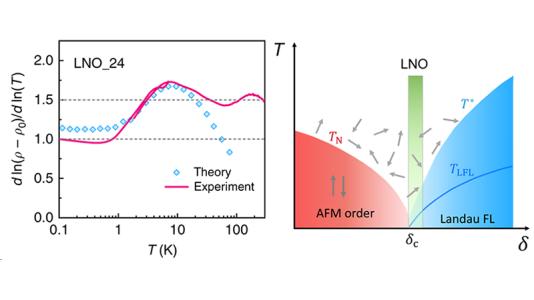
Scientific Achievement
Scientists observed an antiferromagnetic quantum critical point (QCP) in high-purity LaNiO3.
Significance and Impact
At a QCP, fluctuations of the order parameter can have a profound influence on the properties of a material, such as a breakdown of the Landau Fermi liquid, leading to a “strange metal” with anomalous transport and thermodynamic properties.
Research Details
- LaNiO3 thin films with unprecedented high purities are prepared using oxide molecular beam epitaxy.
- Transport measurements reveal a linear dependence of the resistivity with temperature over nearly a decade for T ≤ 1.1 K. Fermi liquid behavior is restored in a large magnetic field when quantum critical fluctuations are suppressed.
- A series of samples with varying levels of disorder show the predicted behavior of the resistivity near a QCP as a function of temperature, as well as a magnetoresistance arising from scattering by local magnetic moments.
Argonne National Laboratory seeks solutions to pressing national problems in science and technology. The nation’s first national laboratory, Argonne conducts leading-edge basic and applied scientific research in virtually every scientific discipline. Argonne researchers work closely with researchers from hundreds of companies, universities, and federal, state and municipal agencies to help them solve their specific problems, advance America’s scientific leadership and prepare the nation for a better future. With employees from more than 60 nations, Argonne is managed by UChicago Argonne, LLC for the U.S. Department of Energy’s Office of Science.
The U.S. Department of Energy’s Office of Science is the single largest supporter of basic research in the physical sciences in the United States and is working to address some of the most pressing challenges of our time. For more information, visit https://energy.gov/science.